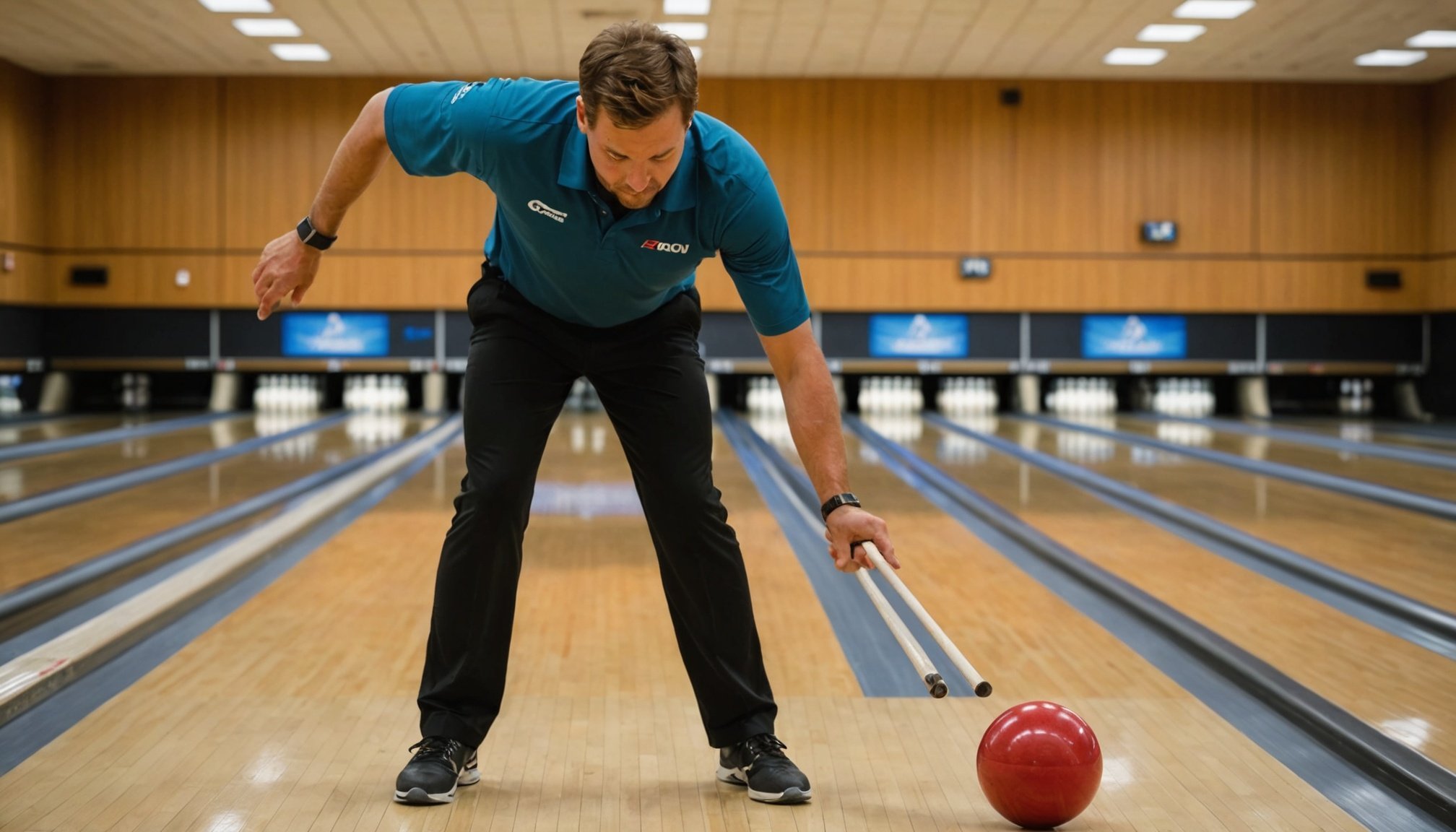Understanding Lower Back Pain in Bowlers
Bowling, a popular sport and pastime, often leads to lower back pain due to the repetitive and dynamic nature of its movements. Understanding the common causes of such bowling injuries is crucial for players aiming to maintain their performance and health. Typically, lower back pain in bowlers stems from poor posture, lack of proper warm-up, and incorrect technique.
Recognising and acknowledging pain early is essential. Ignoring discomfort can exacerbate the injury, leading to more serious complications. Therefore, bowlers should be aware of their bodies and seek professional advice if they experience persistent pain. Early intervention is key to preventing further injury and maintaining both back health and overall well-being.
Have you seen this : Maximizing gymnastics potential: how proprioceptive training enhances athletic excellence
According to studies, bowlers frequently experience spinal issues, with back injuries accounting for a significant portion of bowling-related problems. Statistics show that a considerable percentage of these injuries result from inadequate preparation and insufficient knowledge about injury prevention.
By focusing on proper bowling techniques and understanding the importance of preventative measures, bowlers can significantly reduce the risk of experiencing lower back pain and enjoy a longer, healthier engagement with the sport.
Also to see : Unlock Athletic Excellence: Harnessing Mental Imagery for Peak Performance in Crucial Moments
Importance of Proper Bowling Technique
Understanding the pivotal role of bowling technique is crucial for both performance and injury prevention. A key component is maintaining an effective posture. Aligning the body appropriately helps in distributing the exerted force evenly, reducing strain on the lower back. Proper foot placement and shoulder alignment are necessary for achieving an optimal stance.
Key Components of Technique
- Posture: A slight bend in the knees and a straight back aids in balance.
- Alignment: Keeping shoulders and feet aligned towards the target enhances accuracy.
Follow-through is another vital aspect. After releasing the ball, continuing the hand motion naturally helps in transferring weight smoothly. This mitigates sudden pressure on the back, which can often be a precursor to injuries. Additionally, proper weight transfer from the back foot to the front foot distributes energy efficiently and diminishes stress on the spine.
Injury prevention through refining technique involves the integration of these elements. Practicing regularly under supervision may provide bowlers with insights into their form and highlight areas needing improvement. Leveraging such guidance can facilitate technique adjustments, fostering a more resilient and injury-free bowling experience.
Stretching and Warm-Up Routines
Engaging in warm-up exercises and stretching before playing can significantly aid in injury prevention for bowlers. These routines are designed to prepare the body, enhancing performance and promoting muscular health.
Recommended Stretches for Bowlers
- Hamstring Stretch: Extend one leg forward, gently reach for your toes to maintain flexibility.
- Shoulder Stretch: Extend your arm across your chest, using the opposite hand to increase the stretch.
Incorporating these stretches increases flexibility and ensures muscles are ready for action.
Importance of Warm-Up Routines
Effective warm-up routines should involve dynamic movements that mimic bowling actions. Consider starting with light cardio, such as jogging in place, to elevate heart rate. Follow with dynamic stretches, including arm circles and torso twists, to improve joint mobility.
Flexibility and Mobility
Achieving a balance of flexibility and mobility helps in pain management and reduces the risk of strain. These elements are crucial for maintaining a strong posture and executing precise movements. By integrating structured warm-up exercises into their regimen, bowlers can safeguard against lower back issues and enjoy a more consistent bowling experience.
Strengthening Exercises for Back Health
To maintain back health and enhance core stability among bowlers, incorporating targeted strengthening exercises is essential. These exercises contribute significantly to preventing lower back injuries by fortifying the muscles that support this region.
Core strength exercises like planks and pelvic tilts play a crucial role. Planks, for example, engage multiple muscle groups, providing comprehensive support to the spine. Pelvic tilts, on the other hand, help in stabilising the lower back by improving flexibility and balance.
The importance of overall body conditioning cannot be understated. Engaging in activities like swimming or yoga can improve endurance and flexibility, which are vital for reducing strain during bowling. Such exercises bolster not just the lower back but also ensure the entire body is conditioned against injuries.
Specifically for improving lower back resilience, exercises such as bird dogs and bridges are beneficial. Bird dogs enhance stability by coordinating movements between limbs, while bridges activate the glutes, ensuring they share the load during physical activities. Including these strengthening exercises as a routine helps in building a robust foundation, ensuring optimum performance while safeguarding against injuries.
Recommended Equipment and Gear
Investing in the right bowling equipment and supportive gear is essential for both enhancing performance and ensuring injury prevention. One of the primary pieces of gear to consider is bowling shoes. Opt for shoes that offer proper support and cushioning. This helps to stabilise the body during play and reduces the risk of lower back strain. Brands with custom fit options can accommodate different foot structures, improving overall comfort and balance.
Choosing the right ball weight is equally crucial. A ball that is too heavy can exert unnecessary stress on the spine and shoulder, while a lighter ball may not provide the desired performance. Bowlers should select a ball that feels comfortable to handle throughout the game, enabling precise control.
Additional considerations for back support include using items like compression garments or lumbar braces. These can help in maintaining correct posture and provide extra support, particularly during extended games. Incorporating such equipment can aid in distributing physical stress more evenly, thus playing a critical role in minimising the risk of back injuries over the long term.
Expert Insights and Testimonials
In managing back pain, expert advice is invaluable. Sports medicine professionals emphasise the role of customised treatment plans and regular assessments. By providing tailored insights, these experts help bowlers understand their pain triggers and develop strategies for effective pain management.
Testimonials from recovering bowlers highlight the transformative power of professional guidance. For instance, bowlers who adhered to structured rehabilitation techniques often report significant improvements in their pain levels and overall performance. Such real-life experiences underscore the importance of combining expert advice with personal commitment.
Moreover, bowlers often share how coaching feedback has influenced their recovery journey. This feedback focuses on refining techniques, such as adjusting posture or fine-tuning the follow-through, which are crucial for alleviating stress on the spine. Testimonials indicate that incorporating these adjustments can lead to substantial reductions in injury recurrence.
The collective input from professionals and recovered bowlers forms a supportive network for those struggling with back injuries. Listening to expert insights and heeding testimonials empowers bowlers to make informed decisions about managing their health, ultimately enhancing their longevity and enjoyment in the sport.
Rehabilitation Techniques for Injured Bowlers
Navigating the path to recovery from lower back pain requires structured rehabilitation strategies tailored to suit individual needs. After a back injury, engaging in physical therapy under professional guidance is essential. Physical therapists, skilled at addressing bowling injuries, design customized plans targeting both pain relief and muscle recovery. This integrated approach ensures a safe and effective return to the sport.
Professional advice often emphasizes the gradual reintroduction of bowling activities. These plans typically include low-impact exercises, focusing on restoring flexibility and strength. Consistent adherence to these routines is critical, as it aids in building core stability and alleviating undue stress on the spine.
Engaging in techniques such as pilates and yoga can further enhance recovery. These practices promote balance and posture alignment, crucial elements in preventing future strain. Additionally, discovering effective pain management techniques, such as mindfulness and deep breathing exercises, contributes positively to the healing journey.
Returning to bowling post-injury is a gradual process, requiring patience and diligence. By prioritising structured rehabilitation and the expertise of healthcare professionals, bowlers can effectively manage their recovery journey, safeguarding their long-term back health and ensuring a safe return to the alleys.
Long-Term Strategies for Back Pain Management
Achieving sustainable back health requires more than just addressing immediate discomfort—it involves thoughtful lifestyle changes and consistent health habits. An integral part of this strategy is implementing lifestyle modifications to prevent lower back pain. Incorporating regular physical activity that enhances core strength, like yoga or pilates, not only supports the back but also improves overall well-being.
Scheduling regular check-ups with healthcare professionals plays a vital role in monitoring back health. These assessments help in identifying potential issues early, allowing for timely intervention. By staying proactive about health, bowlers can address minor discomforts before they escalate into more serious conditions.
Creating a balanced bowling routine is essential to maintaining back health in the long term. This includes ensuring adequate rest between sessions, focusing on proper technique, and avoiding overexertion. Moreover, integrating proper stretching and warming-up routines ensures that the body is well-prepared for physical activity, minimising the likelihood of injury.
Together, these strategies form a comprehensive approach to pain management. They empower bowlers to enjoy their beloved sport while safeguarding their long-term health. Engaging in these preventative measures can significantly reduce the risk of recurring lower back pain.





